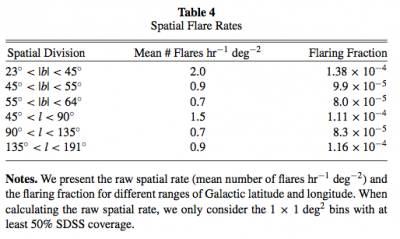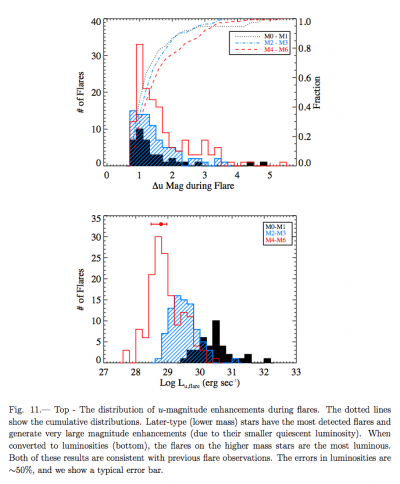Difference between revisions of "Triggers:Flares"
From Gaia Science Alerts Working Group
Jump to navigationJump to search| Line 2: | Line 2: | ||
Statistical study of M dwarf flares in Stripe 82 is presented in [http://arxiv.org/abs/0906.2030 Kowalski et al. 2009]. | Statistical study of M dwarf flares in Stripe 82 is presented in [http://arxiv.org/abs/0906.2030 Kowalski et al. 2009]. | ||
| + | |||
| + | Kepler M and K flares are analysed in [http://arxiv.org/abs/1008.0853 Walkowicz et al. 2011]. | ||
[[File:Flare_example_Stripe82.png|400px|right]] | [[File:Flare_example_Stripe82.png|400px|right]] | ||
Latest revision as of 09:46, 3 October 2011
M dwarf flares
Statistical study of M dwarf flares in Stripe 82 is presented in Kowalski et al. 2009.
Kepler M and K flares are analysed in Walkowicz et al. 2011.
- Colour range for M-dwarfs (r − i) > 0.53 and (i − z) > 0.3 and (u-r) > 3
- The most flaring are late type M-dwarfs (M4-M6), earlier types (M2-M3) flare half as often as late types and M0-M1 dwarfs flare only 20% as often as late types.
- flares are the most pronounced in u-band
- around 35% of M-dwarfs are in binary systems - these have bluer u-g. Most single M-dwarfs will have u-g > 1.8
- g - K > 4 - significantly brighter in IR (2MASS cross-match) than Visual.
- amplitude in u > 0.7 mag up to 5 mag.
- large and small flares possible on the same star
- flaring fraction: 0.0108%, i.e. 1 of every 10,000 observation of a M-dwarf in Stripe 82 resulted in a flare
- Sloan (5yrs) flaring star probabilities for different types of Mdwarf: M0-M1: 38/35,000; M2-M3: 79/13,000; M4-M6: 119/2120.
- 1.3 flares per hour sq.deg with <math>\Delta u > 0.7</math> mag, with slightly more flares towards the galactic plane.
Light curve examples
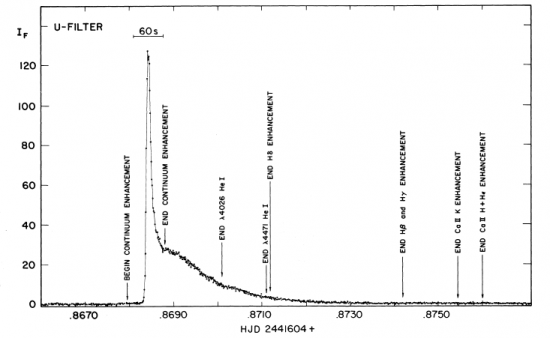
High temporal resolution observations of a flare from UV Cet star. From Bopp & Moffett 1973.

The YZ Cmi U-band flare. From Kowalski 2010
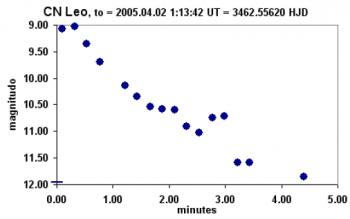
Outburst of the flare star CN Leo. From Sokolowski 2008.
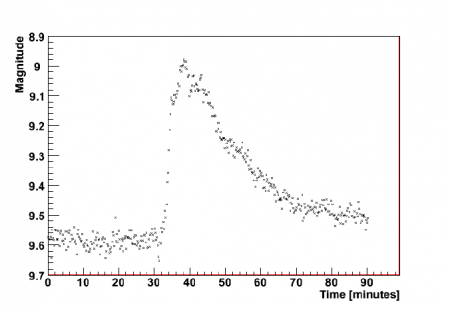
High temporal resolution observations of a flare star by Pi of the Sky. From Sokolowski 2008.
Spectrum examples
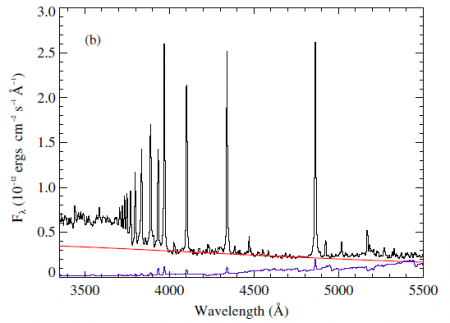
Example of a flare spectrum with an excess of radiation at short wavelengths and pronounced Balmer emission lines. From Kowalski 2010.

Spectrum of an M6 dwarf is extremely red. From SDSS DR7

